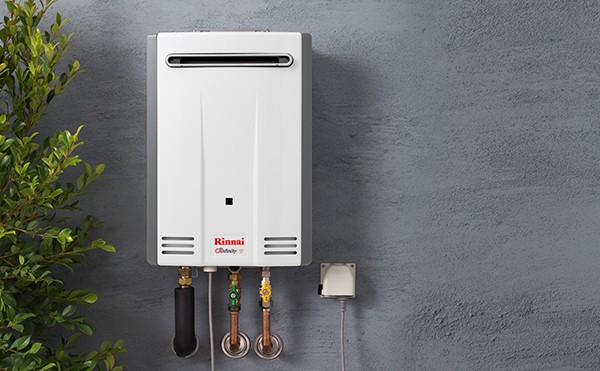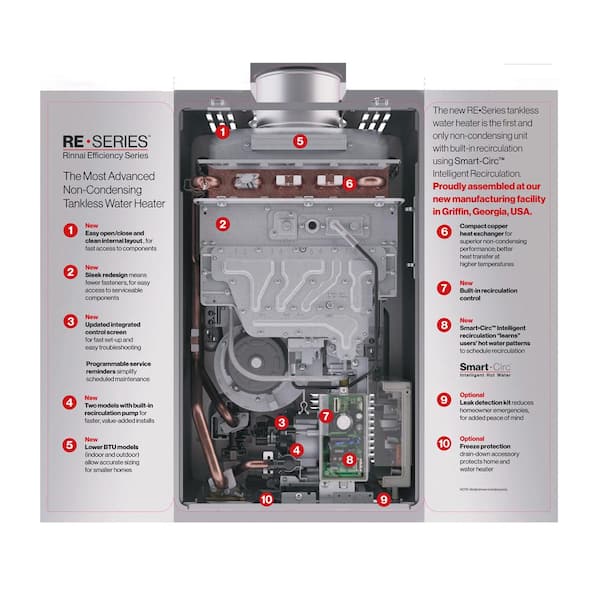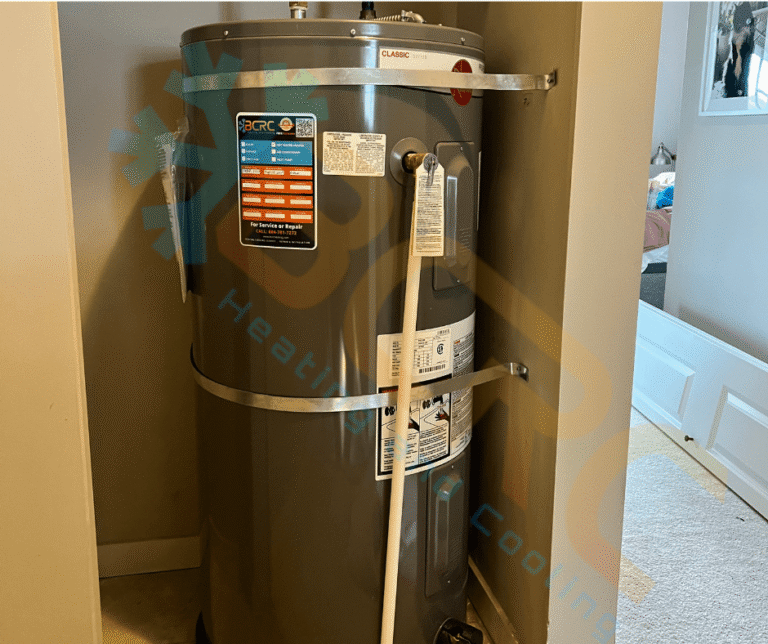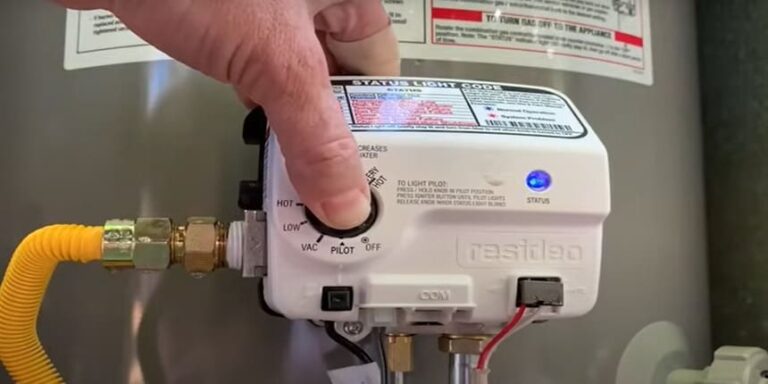Imagine stepping into your shower only to be greeted by a disappointing trickle of water. You might wonder if there’s a solution to this common problem.
If you’ve been searching for a reliable way to enjoy consistent water pressure, a Rinnai tankless water heater might be just what you need. But what if your Rinnai heater is experiencing low pressure? Don’t worry; you’re not alone, and there are straightforward solutions to get things back on track.
As you read on, you’ll discover how this innovative system can transform your home’s water experience, offering both efficiency and reliability. Uncover the secrets to maintaining optimal water pressure and learn how to get the most out of your tankless water heater. Let’s dive in and ensure you never face another disappointing shower again!

Credit: www.brisbaneplumbinganddrainage.com.au
Common Causes Of Low Pressure
Rinnai tankless water heaters are popular for providing endless hot water. Yet, low water pressure can ruin this experience. Understanding the causes can help fix the issue. Knowing the common reasons can save time and money.
Clogged Filters
Clogged filters are a common cause of low pressure. Filters trap dirt and debris. Over time, they become blocked. This restricts water flow. Regular cleaning of filters is necessary. It ensures smooth operation of the heater.
Mineral Buildup
Mineral buildup also affects water pressure. Hard water contains minerals like calcium. These minerals settle inside the heater. They form a hard scale. This scale blocks water flow. Descaling can help remove these deposits.
Incorrect Installation
Incorrect installation can lead to pressure problems. Pipes may be improperly connected. Valves may not be fully open. This limits water flow. Checking installation can reveal mistakes. Fixing these can restore normal pressure.
Diagnosing Pressure Issues
Experiencing low pressure with your Rinnai tankless water heater can be frustrating. Understanding the cause is essential for a quick fix. This guide will help you diagnose pressure problems effectively. Whether it’s a minor issue or something more complex, identifying the root is key.
Checking Water Flow
Begin by assessing the water flow to your heater. Ensure the water supply is steady and uninterrupted. A blocked or restricted line may cause low pressure. Examine the pipes for any visible obstructions. Clear any debris to improve water flow. Regular maintenance can prevent these issues.
Inspecting Water Valves
Next, inspect the water valves connected to the heater. Ensure they are fully open. A partially closed valve can reduce water pressure significantly. Sometimes, debris can clog valves. Clean them to restore proper function. Confirm they are not damaged or leaking.
Evaluating Pipe Size
Pipe size plays a crucial role in water pressure. Check if the pipes leading to the heater are appropriately sized. Smaller pipes can restrict flow and lower pressure. Consider upgrading to larger pipes if necessary. Proper sizing ensures optimal water delivery.
Maintenance Tips
Maintaining your Rinnai Tankless Water Heater ensures efficient performance. Regular upkeep prevents issues related to low pressure. Follow these tips to keep your heater in top shape. Proper care extends its lifespan and ensures consistent water flow.
Regular Descaling
Mineral buildup affects heater efficiency. Descale every six months. Use a descaling solution to remove deposits. Regular descaling keeps water flow smooth and prevents low pressure.
Cleaning Inlet Filters
Inlet filters can clog over time. Clean them every three months. Remove the filters and rinse under water. Clean filters ensure proper water pressure and prevent blockages.
Annual Professional Inspection
Schedule a yearly professional checkup. A technician can spot hidden issues. They ensure your heater runs efficiently. Professional inspection helps maintain optimal water pressure.

Credit: www.reddit.com
Diy Solutions
Struggling with low pressure in your Rinnai tankless water heater? Simple DIY solutions can help improve water flow. Regular cleaning of filters and checking for clogs in pipes can enhance performance.
When your Rinnai tankless water heater shows signs of low pressure, it might seem daunting. But before calling a professional, there are several DIY solutions you can try. Tackling these issues yourself can save you time and money, and you’ll gain some handy skills. Let’s explore some practical steps to boost your water heater’s performance.Adjusting Pressure Settings
One of the simplest solutions is to adjust the pressure settings on your water heater. Locate the pressure valve, typically found near the bottom. Carefully turn the valve to increase the water pressure. Make small adjustments and check the pressure after each tweak. Have you noticed a change? Sometimes, the settings might just need a slight nudge. If you’re still experiencing low pressure, it might be time to look at other potential issues.Replacing Old Filters
Old filters can be a silent culprit. Over time, they become clogged with debris, reducing water flow. Replacing them can significantly improve pressure. To replace a filter, first, turn off the water supply. Carefully remove the old filter and install a new one. Make sure it’s tightly secured to prevent leaks. Think about how long it has been since you last changed the filter. Regular maintenance can prevent pressure problems from arising in the first place.Clearing Blockages
Blockages can occur in the pipes leading to and from the heater. Mineral buildup or debris can restrict water flow, leading to pressure issues. To clear blockages, inspect the pipes for any visible obstructions. Use a pipe cleaner or a similar tool to remove any buildup. Be gentle to avoid damaging the pipes. Have you cleared all visible blockages? Regular inspection and cleaning can ensure your water heater runs smoothly for years to come. Are you ready to tackle these DIY solutions? With a little effort, you can restore your water heater’s efficiency and enjoy a comfortable water pressure once again.When To Call A Professional
Experiencing low pressure in your Rinnai tankless water heater might need professional help. Persistent issues can indicate complex problems that require expert diagnosis. A skilled technician can ensure optimal performance and prevent further damage.
When your Rinnai tankless water heater isn’t performing as expected, it can disrupt your daily routine. While some minor issues can be solved with a quick DIY fix, there are times when a professional’s expertise is indispensable. Understanding when to call in a pro can save you time, money, and a lot of frustration.Persistent Issues
If your water heater consistently underperforms, it’s time to seek professional help. Maybe you’ve noticed that the water isn’t as hot as it should be or fluctuates unexpectedly. A professional can diagnose the problem quickly and prevent further damage. Ignoring persistent issues can lead to more significant problems. Don’t wait until it’s too late and the repair costs skyrocket. It’s not just about fixing the current issue but ensuring your water heater’s longevity.Complex Repairs
Not all repairs are created equal. If the problem involves intricate parts like the gas line or electrical components, step aside. Professionals have the right tools and expertise to handle complex repairs safely and effectively. Attempting these yourself can be dangerous. You risk not only damaging the unit further but also harming yourself. Leave the heavy lifting to those trained to do it.Warranty Considerations
Your Rinnai tankless water heater likely comes with a warranty. However, unauthorized repairs can void this warranty. It’s crucial to call a certified professional for any repair work. Check your warranty’s fine print. Most warranties specify that only authorized technicians should perform repairs. Protect your investment by ensuring any work done is covered under warranty. You might think DIY repairs save money, but the opposite could be true. Consider the long-term benefits of professional service and how it can provide peace of mind. After all, isn’t it better to enjoy a hot shower without worrying about your heater malfunctioning again?Preventive Measures
Maintaining a Rinnai tankless water heater ensures efficient performance. Low water pressure can hinder its functionality. Taking preventive measures is essential for a seamless experience. Regular maintenance keeps the system running smoothly.
Routine System Checks
Regular inspections prevent unexpected issues. Check for leaks around the heater. Ensure all connections are secure. Look for unusual noises during operation. Address minor problems before they escalate. A well-maintained system performs better.
Installing Water Softeners
Hard water affects your heater’s efficiency. Installing a water softener can help. It reduces mineral buildup in your system. This prolongs the lifespan of your heater. Softer water means less maintenance and fewer repairs.
Upgrading System Components
Older components may need upgrading. Newer parts improve performance and efficiency. Consider replacing outdated valves and fittings. Upgraded components can handle pressure fluctuations better. Invest in high-quality parts for lasting results.
Choosing The Right Model
Choosing the right Rinnai tankless water heater model can be crucial. The right model ensures efficient operation and satisfaction. Understanding your specific water needs is key. It helps make an informed decision. Consider factors like flow rates and energy efficiency.
Assessing Water Needs
Determine how much hot water your household uses. Larger families may need more water. Consider daily activities such as showering, dishwashing, and laundry. Estimate peak usage times to avoid water shortages. Knowing your water needs helps choose the right capacity.
Comparing Flow Rates
Flow rate measures water heater output per minute. Higher flow rates deliver more hot water. Compare models to match your household’s demand. Ensure the flow rate supports multiple tasks simultaneously. This prevents interruptions and ensures comfort.
Evaluating Energy Efficiency
Energy efficiency impacts utility bills. Look for models with high energy ratings. Efficient heaters reduce energy consumption. This saves money and benefits the environment. Check for features like smart controls and energy-saving modes. They enhance performance and reduce costs.

Credit: www.homedepot.com
Frequently Asked Questions
Why Is The Pressure Low On My Rinnai Water Heater?
Low pressure in a Rinnai water heater can result from clogged filters, faulty valves, or plumbing issues. Check for any blockages or leaks in the system. Ensure proper maintenance and cleaning of the unit. If problems persist, contact a professional technician for further assistance.
Why Is The Water Pressure Low On My Tankless Water Heater?
Low water pressure in tankless water heaters can result from clogged filters or mineral buildup. Check for blockages in pipes. Ensure the water supply valve is fully open. Inspect the heater for any leaks. Regular maintenance and cleaning can prevent pressure issues.
Consider consulting a professional if problems persist.
How Do I Adjust The Water Pressure On A Tankless Water Heater?
To adjust water pressure on a tankless water heater, locate the pressure control valve. Turn the valve clockwise to increase pressure or counterclockwise to decrease it. Ensure the heater is off before making adjustments. Regularly check for leaks after adjustments to maintain optimal performance.
Is There A Pressure Relief Valve On A Tankless Water Heater?
Tankless water heaters typically don’t have pressure relief valves. They rely on built-in safety features and proper installation. Always check the manufacturer’s guidelines for specific requirements, and ensure professional installation for optimal safety and performance. Regular maintenance can also prevent pressure-related issues.
Conclusion
Choosing a Rinnai tankless water heater can solve low pressure issues. It offers efficient and consistent hot water. Energy savings are a big plus. Installation might need expert help. Maintenance remains easy with regular checks. The heater’s compact size saves space.
Suitable for small homes or large households. Consider your water needs before buying. Investing in a Rinnai heater ensures reliability. Enjoy hot showers without pressure worries. This choice balances efficiency with performance. A smart pick for modern homes.


